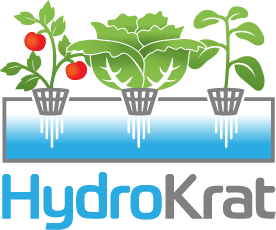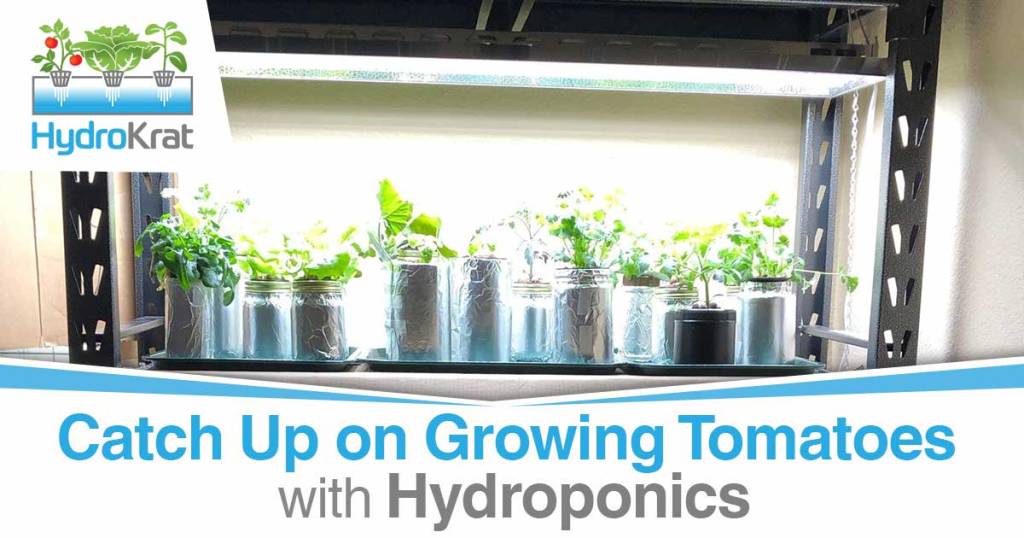From choosing the location, to preparing the soil, and keeping weeds away, there is a lot that goes into creating a home vegetable garden. But what if there was another way to produce more, faster? While hydroponic systems for gardening have been around for centuriesmore and more modern families are turning to hydroponics to feed their families.
What is Hydroponics?
There is evidence of hydroponic technology being used throughout history, from the hanging gardens in Babylon to the floating gardens of the Aztecs in Mexico. So, why have hydroponics taken off in recent years?
Hydroponics is the cultivation of plants by placing the roots in liquid, nutrient-rich solutions rather than planting them in soil. Quite literally, hydroponics translates to “working water.” A basic hydroponic system consists of three things: 1) light, 2) air, and 3) water. You need all three in the proper proportions for your garden to be successful. In addition to having a more controlled environment, hydroponic systems offer several benefits.
Hydroponic gardens:
- Typically produce more harvest than gardening done in the soil
- Allow food to be grown in areas where soil does not support all crops
- Eliminates the need for pesticides and other chemicals when growing food
Can you grow tomato plants in water?
If you are new to hydroponic gardening, you may be wondering which type of plants grow best in this type of environment. Hydroponic gardeners have seen success with all types of plants, but starting with vegetables that grow quickly and demand little maintenance. Plants such as these will give you a hands-on learning experience for your hydroponic system, and to make adjustments to be even more successful.
Some of those plants include:
- Greens (spinach, lettuce, kale)
- Herbs (basil, cilantro, oregano)
- Strawberries
- Hot Peppers
- Tomatoes
So, why do plants like tomatoes grow well in hydroponics? Vining plants, like tomatoes, take up very little ground space. Because they do not spread, you can grow them higher than you might other plants. With such a controlled environment, you will be able to grow them all year long. Hydroponics also help lower the chance your plants will be diseased or overrun by pests.
Which hydroponic system is best for growing tomato plants?
Because tomatoes are so adaptable, they will grow in nearly any hydroponic system you want to set up at your home. However, there are several environmental considerations to make before deciding where to place your system and plants.
- Temperature – Due to their hearty nature, tomato plants are known to thrive in many different temperatures. However, tomatoes do best in temperatures between 55- and 88-degrees Fahrenheit. Tomato plants can handle temperatures outside this range, but not for long. So, you must ensure the location of your hydroponic system is in an area where you can control the thermostat.
- Nutrients – As you know, plants need certain nutrients to live. Tomatoes are no different. Using a hydroponic system to grow your tomato plants allows you to design and control the nutrients that are getting to your plants. Tomatoes prefer their water to be slightly acidic, so adjustments might need to be made to the nutrient solution you are using in your hydroponic system.
- Light – Light is just as important to the growth of tomatoes as the environment and the nutrients it receives. While recommendations range, your tomato plants will need a minimum of five hours of full light each day. Other gardening experts say you need at least eight. That means your hydroponic system will need to be placed in a well-lit area.
Other things to consider when planning to grow tomato plants in a hydroponic system is pollination and the overall environment. In order to bear fruit, tomato plants need to be pollinated. Indoors, that presents a problem as wind and insects can help to pollinate the plants. To help with pollination, shaking the plants to loosen any pollen can help. That being said, you also need to keep an eye on the presence of bugs or disease in plants.
So, which type of system should you use when growing tomatoes with your hydroponic system? While there are many options on the market, knowing the basics of different systems can help you make the right choice for you. If you still have questions, the experts at HydroKrat are happy to help.
- Nutrient Film Technique (NFT) – The Nutrient Film Technique creates a continuous feeding cycle for your plants. Using a slightly sloped growing area, the solution is soaked up by the roots of the plant which barely touch the water and nutrients, as they make their way back to the nutrient solution reservoir.
- Ebb and Flow – The Ebb and Flow system is popular for its simplicity, and works by sending the nutrient solution into the growing tray, sometimes flooding it, and allowing it to drain slowly.
- Drip System – While a little more technical, the Drip System is similar to the Ebb and Flow. However, the Drip System does give you more control. Through this method, the nutrient solution is held in a reservoir. Instead of flooding the grow tray, tubes take the solution to plants, allowing you to better customize the feeding of each plant.
Where do I start?
While many hydroponic methods exist, knowing where to start can be difficult. That is why the experts at HydroKrat are standing by to help you decide which system is best for your needs, and offer advice on setting up your system. Contact HydroKrat at (888) 784-9376.


Recent Comments